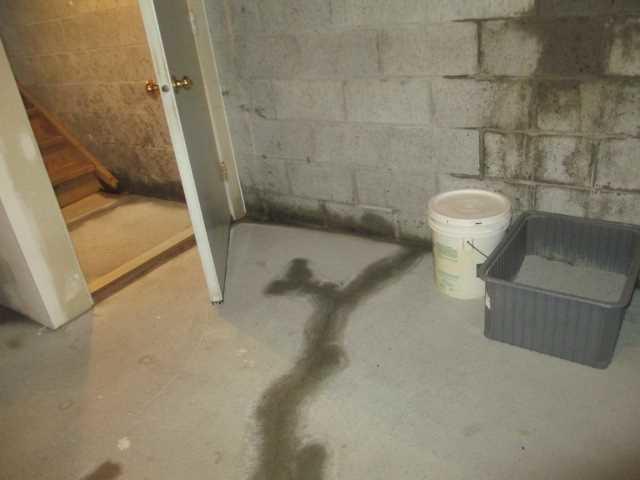
Water Flooding Through Walls and Floor
There's heavy staining on both the walls and the floor in a few corners - particularly near the hot spot at the foot of the stairs. And if you had any doubts that water was coming through the floor, check out the water-stained cracks.
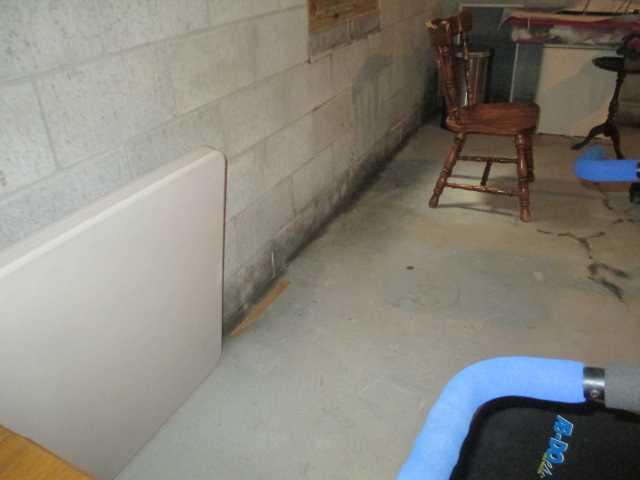
Water Damage On Basement Walls
Heavy water damage is visible at the join of the wall and the floor - this is unsurprising since a lot of the water issues were originating in the floor. This is likely a result of soil shifting in the road work that was done a few years ago, and the resulting hydrostatic pressure.

Heavy Water Concentration at Foot of Stairs
In addition to entering through the walls, you can see a crack at the foot of the stairs where water is coming up and pooling.

Close-Up of Damage in Stairwell
You can see the crack much better here - doorways and the foot of a stairwell are both known for heavy flooding and need something a little stronger than WaterGuard.
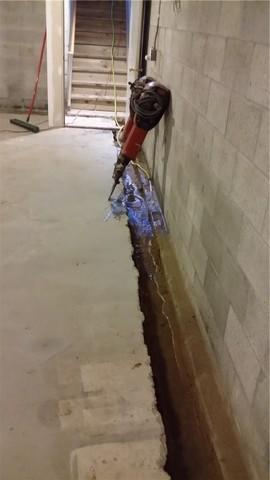
Removing Floor for WaterGuard Installation
In order to install the WaterGuard track, we first have to remove a portion of the floor around the perimeter. We'll be showing you this section of the floor at multiple points in the process so you can see how it all works.
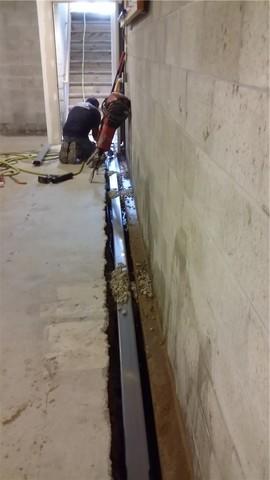
WaterGuard Installation in Progress
After the floor is drilled out, we install the WaterGuard track and cover it with drainage stone to help the water filter into the track.

WaterGuard Installation Ready for New Concrete
Once the WaterGuard system is installed and secured, it's time to pour new concrete and restore the floor.
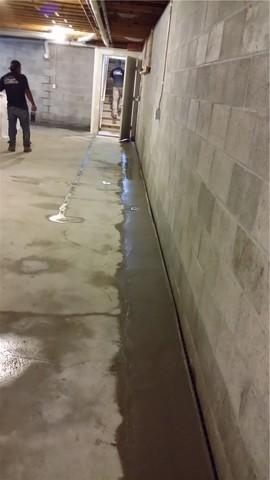
The Finished Product
This is what that same stretch of floor looks like once the concrete is poured - good as new.
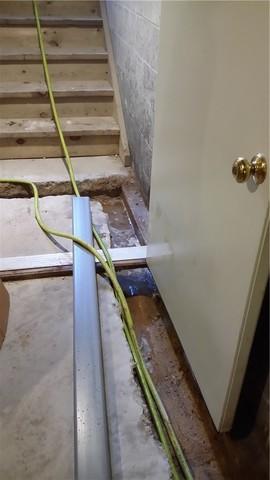
Area at Foot of Stairs Needs Special Attention
The spot at the base of the stairs is one of those notorious trouble zones in basements with flooding problems. It needs something a little more intense than WaterGuard.
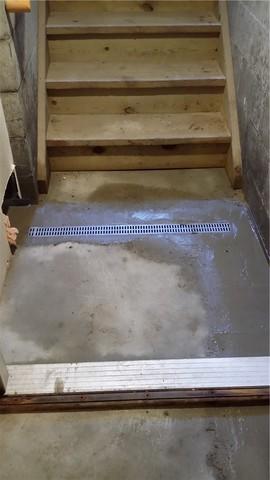
TrenchDrain Allows Quick Removal of Water
In spots where a lot of water invades in short order, like doorways and the base of stairs, we can install a TrenchDrain system. The large grates allow for quick draining and it's tied right into the WaterGuard for easy removal.
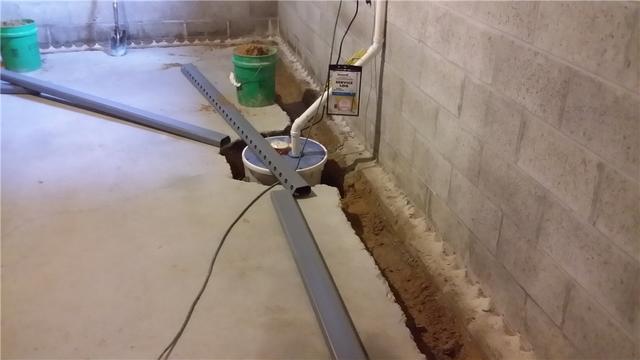
SuperSump Proactively Removes Water
Instead of waiting for the water to soak back into the ground (it won't), we installed a SuperSump pump to actively remove the water and discharge it outside.
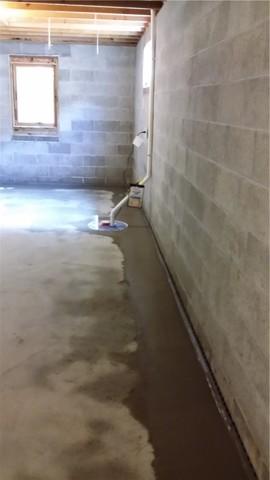
Floor Restored After WaterGuard Installation
After everything is installed, new concrete is poured to restore the floor to its original state - that is, a floor - but better, since the flooding will be taken care of.
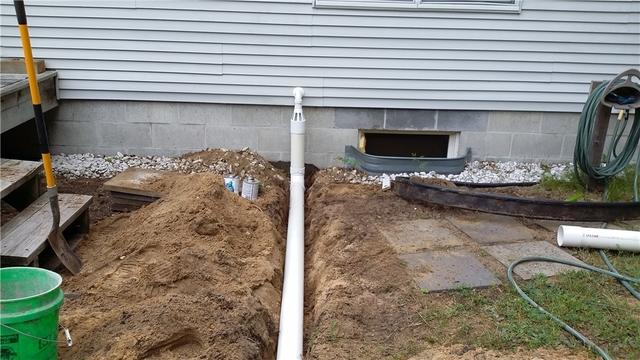
Discharge Line Ensures Water Removal
We extend the discharge line as far as we need to in order to ensure that the water won't just flow right back into your basement. And by installing an IceGuard cap on the line, we give the water an emergency escape route in the event that the discharge line freezes in the winter.
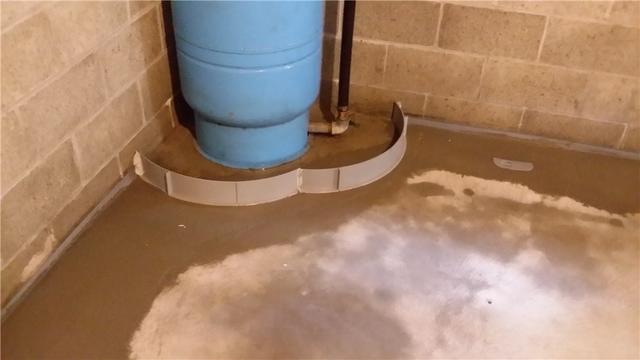
Flood Ring Prevents Appliance Overflow
Sometimes water doesn't come from outside - sometimes it comes from an overflowing water heater or other appliance. In that case, we can use a Flood Ring to keep the water contained and direct it right back to the WaterGuard.









